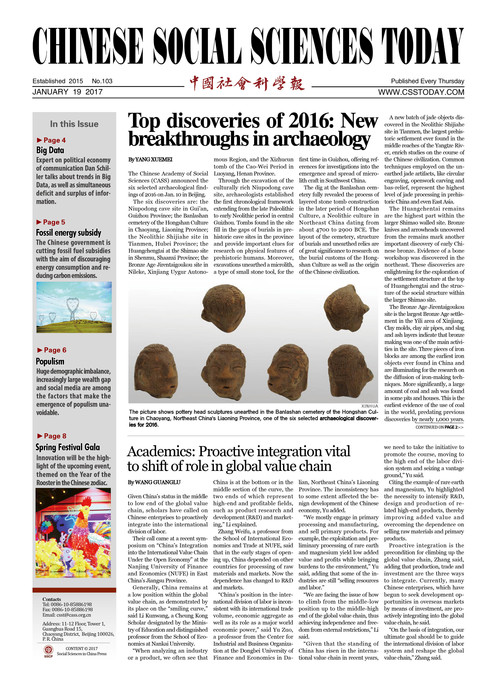Academics: Proactive integration vital to shift of role in global value chain
By WANG GUANGLU
Given China’s status in the middle to low end of the global value chain, scholars have called on Chinese enterprises to proactively integrate into the international division of labor.
Their call came at a recent symposium on “China’s Integration into the International Value Chain Under the Open Economy” at the Nanjing University of Finance and Economics (NUFE) in East China’s Jiangsu Province.
Generally, China remains at a low position within the global value chain, as demonstrated by its place on the “smiling curve,” said Li Kunwang, a Cheung Kong Scholar designated by the Ministry of Education and distinguished professor from the School of Economics at Nankai University.
“When analyzing an industry or a product, we often see that China is at the bottom or in the middle section of the curve, the two ends of which represent high-end and profitable fields, such as product research and development (R&D) and marketing,” Li explained.
Zhang Weifu, a professor from the School of International Economics and Trade at NUFE, said that in the early stages of opening up, China depended on other countries for processing of raw materials and markets. Now the dependence has changed to R&D and markets.
“China’s position in the international division of labor is inconsistent with its international trade volume, economic aggregate as well as its role as a major world economic power,” said Yu Zuo, a professor from the Center for Industrial and Business Organization at the Dongbei University of Finance and Economics in Dalian, Northeast China’s Liaoning Province. The inconsistency has to some extent affected the benign development of the Chinese economy, Yu added.
“We mostly engage in primary processing and manufacturing, and sell primary products. For example, the exploitation and preliminary processing of rare earth and magnesium yield low added value and profits while bringing burdens to the environment,” Yu said, adding that some of the industries are still “selling resources and labor.”
“We are facing the issue of how to climb from the middle-low position up to the middle-high end of the global value chain, thus achieving independence and freedom from external restrictions,” Li said.
“Given that the standing of China has risen in the international value chain in recent years, we need to take the initiative to promote the course, moving to the high end of the labor division system and seizing a vantage ground,” Yu said.
Citing the example of rare earth and magnesium, Yu highlighted the necessity to intensify R&D, design and production of related high-end products, thereby improving added value and overcoming the dependence on selling raw materials and primary products.
Proactive integration is the precondition for climbing up the global value chain, Zhang said, adding that production, trade and investment are the three ways to integrate. Currently, many Chinese enterprises, which have begun to seek development opportunities in overseas markets by means of investment, are proactively integrating into the global value chain, he said.
“On the basis of integration, our ultimate goal should be to guide the international division of labor system and reshape the global value chain,” Zhang said.



